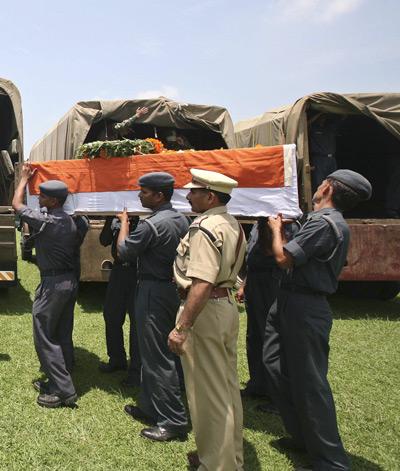
Sitting amidst Indian Air Force helicopter pilots -- less than 36 hours after they had lost five of their buddies in the Mi-17 crash -- provided an object lesson in putting duty before self. Grieving they certainly were over the loss of close friends and colleagues, but the sorrow was channelised in doing the job at hand with renewed zeal and dedication, says Nitin Gokhale
Rescue operations did not stop for a moment; neither did the easy banter. But underneath the surface calm was a lurking fear of the unknown, brought about by the inclement weather. So leaders were constantly keeping a close watch on which helicopter was where.
Even a five minute delay in schedule take-off or landing prompted immediate queries: "Find out where 846 is? Has he taken off? Which valley route is he taking?" ;Tell 631 not to take off right now, there's a small patch of rain in the Badri valley," the leader would ask the juniors even while he looked up in the sky and gauged the thickness of the fog and moving cloud from the ground at Gauchar.
The professionalism and dedication to duty was embodied by Honorary Flying Officer Satinder Singh. Less than a month away from retirement, this veteran 'flying gunner' volunteered to come and work in Operation Rahat, the name given by the Indian Air Force to its rescue mission.
For the last 10 days, he has barely slept. In a month, he says, there will be plenty of time to rest -- he retires then.
"I feel proud to be here for this mission at the end of my long service of 38 years," the Hon Flying Officer told me.
"This is one the biggest relief operations that I have been a part of," he said as he stood in a green jumpsuit in front of the Mi-17 helicopter.
Click on NEXT for more...
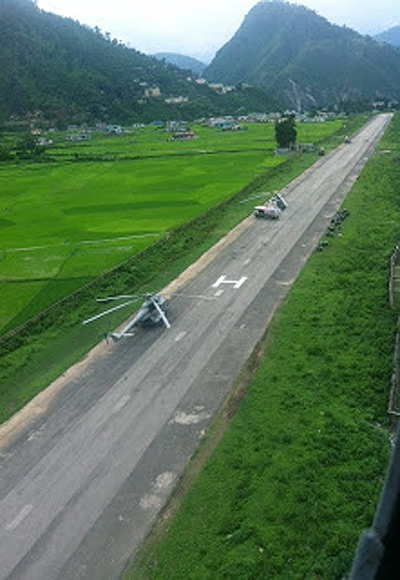
He was brought to Gauchar from his unit at Hindon in Uttar Pradesh.
"My message to all air force warriors is this -- Do your duty, someone will surely recognise your work," he told me as he went about his work.
Even officers were not far behind. Group Captain Ajay Shukla, posted in Dimapur, was on leave at home in Dehradun when the calamity hit. He volunteered his services. Though not allowed to fly at the moment, as a senior officer, Group Captain Shukla was drafted to be a ground operations coordinator. Even a senior officer like Air Vice Marshal SRK Nair, Assistant Chief of Staff, operations, at the Air HQ, camped at Gauchar to lend leadership at a crucial stage.
In these parts of the country, dotted with imposing mountains and scary valleys, fickle weather is the helicopter pilot's greatest challenge. In the monsoons, the weather is the biggest adversary. It can change within minutes; a helicopter takes off after getting reports of a clear passage to Kedarnath valley but by the time it gets to Gaurikund (halfway to the shrine), the clouds close in, forcing the chopper to turn back.
For the past fortnight now, the IAF's brave pilots are battling the vagaries of weather and terrain to pull out stranded pilgrims, drop relief material, transport troops and act as an air bridge to cut off areas.
Click on NEXT for more...
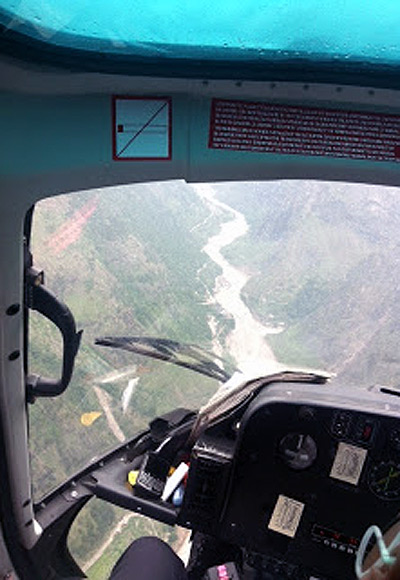
It is difficult to say if this is the world's biggest peace time helicopter operation, but with 44 helicopters of the IAF deployed at one time, it is certainly ONE of the biggest in the recent memory. The operation, based out of a rarely used airstrip at Gauchar, is conducted without any basic support.
The ATC is in a makeshift tent, senior-most officers sit out in the open, regulating traffic.
For the first few day,s in absence of local administration and police bandobast, the airstrip resembled the inter-state bus terminus!
Apart from IAF's 44 helicopters, there were at least half a dozen Pawan Hans and private helicopters landing in and flying out of the 4,000 feet airstrip; rescued yatris, aid workers, and state government officials were being ferried in endless sorties without any manifest or record.
It was only after last Tuesday's crash -- in which 20 men from IAF, Indo-Tibetan Border Police and National Disaster Response Force vanished -- that it dawned on the local administration to impose some kind of order by barricading the all-important airstrip and controlling the access to the operational area.
There were other coincidences.
Click on NEXT for more...
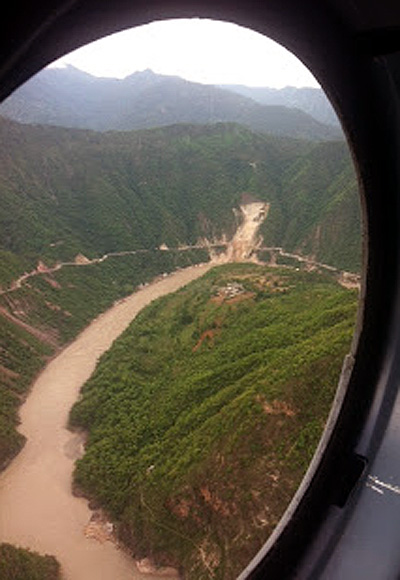
Back in 2007, the 75th year of IAF, I was filming a documentary on Making of India's Air Warriors at the Air Force Academy by following the lives of four cadets through the year. One of them was Khushboo Gupta, a smart young lady passionate about flying.
Six years later, Flight Lieutenant Khushboo is part of Operation Rahat, the relief mission launched by the Air Force in Uttarakhand, easily its largest peace time deployment in recent decades. As a pilot of the ageing Cheetah and Chetak helicopters, Gupta and her husband, also a helicopter pilot, have launched near-impossible sorties, flying between high mountains, in valleys full of thick clouds to pull out thousands of pilgrims from the pilgrimage centres of Kedarnath, Badrinath, Gangotri and Yamnotri.
The Air Force employed its largest helicopter, the Mi-26, the newly acquired C-130 J Hercules aircraft and over 44 helicopters drawn from as far off places as Shillong, Bagdogra and Hyderabad.
All the aircraft together carried over 235 tonnes of relief material, rescued over 13,000 pilgrims, a stupendous task by any standard.
The army too put in more than 8,500 men on the ground, recovering people from dense jungles through special force troops, looking after them in camps for over a fortnight and escorting them through difficult terrains. Over 31,000 pilgrims owe their return home to the army.
Click on NEXT for more...

The army's para-commandos, the best special forces India has, helped in the toughest rescue acts, helping the Air Force Commandos -- Garuds -- to negotiate their way through trecherous terrain where the Mi-17 crashed, and recover the bodies of the dead soldiers.
Central Army Commander Lieutenant General Anil Chait, leading from the front, visited the area a number of times and also walked a 12 km stretch with stranded pilgrims between Badrinath and Pandukeshwar to inspire them.
The Indo-Tibetan Border Police deployed in the higher reaches of Uttarakhand also rose to the occasion. Its personnel worked in close coordination with the army and the air force to make sure many lives were saved by timely medical attention and providing food and shelter to the stranded yatris.
The heroic acts came at a price though. On June 25, a Mi-17 helicopter carrying 15 ITBP, 5 NDRF men and 5 IAF crew crashed in bad weather, killing all those on board instantly. The accident brought home the stark reality of pushing safety limits for the sake of saving lives.
Click on NEXT for more...
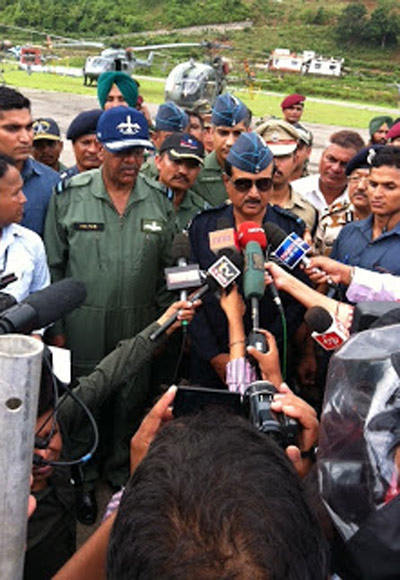
Undeterred by the tragedy, the forces carried on the good work without a break. Air Chief Air Chief Marshal NAK Browne personally flew down to Gauchar and told his men and women to carry on with the task, saying the greatest tribute to the fallen heroes was to complete the task at hand.
The difficult terrain and uncertain weather -- the biggest enemy for rescuers -- also meant that the forces adopted innovative methods and employed out of the box solutions. The army, for instance, dropped 18 teams of 5-man each all along the most difficult stretch of on the Kedarnath axis in order to locate all those stranded there.
The Special Forces teams were self contained and capable of scouring the jungles for a week at a stretch. These teams eventually located 1,000 people, who had lost their way.
Click on NEXT for more...
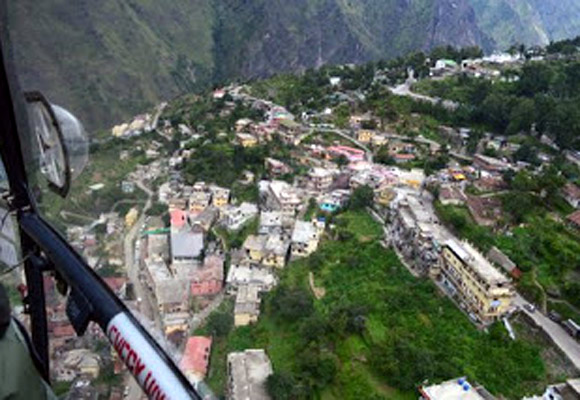
The air force too thought of new systems. It fully utilised the versatility the C-130 aircraft provides
When the forward staging base at Dharasu was running short of fuel for rescue helicopters, the Hercules carried 8000 litres of extra fuel, downloaded it in a container that was transported from Chandigarh in the Mi-26 helicopters -- the world's largest!
Till now, such a big plane had never landed at the short airstrip at Dharasu, which has a only a 3,300 feet runway. The C-130 J was also employed to make weather sorties through its electro-optical infra red sensors that fed accurate real time weather data to the helicopter pilots which enabled them to avoid tricky areas.
The mammoth rescue effort brought home a bitter truth: India still doesn't have an effective framework for disaster management despite the setting up of the NDMA almost eight years ago. Instead, the men and women of the armed forces and paramilitary organisations continue to be the first responders and main saviours in any natural calamity that hits the country.
Click on NEXT for more...
...